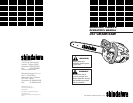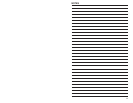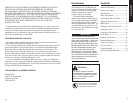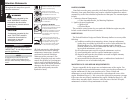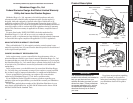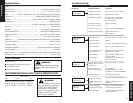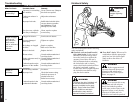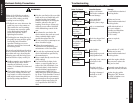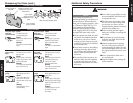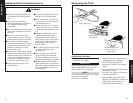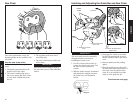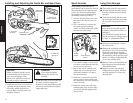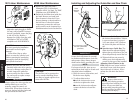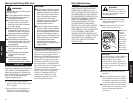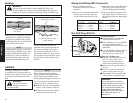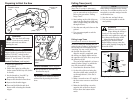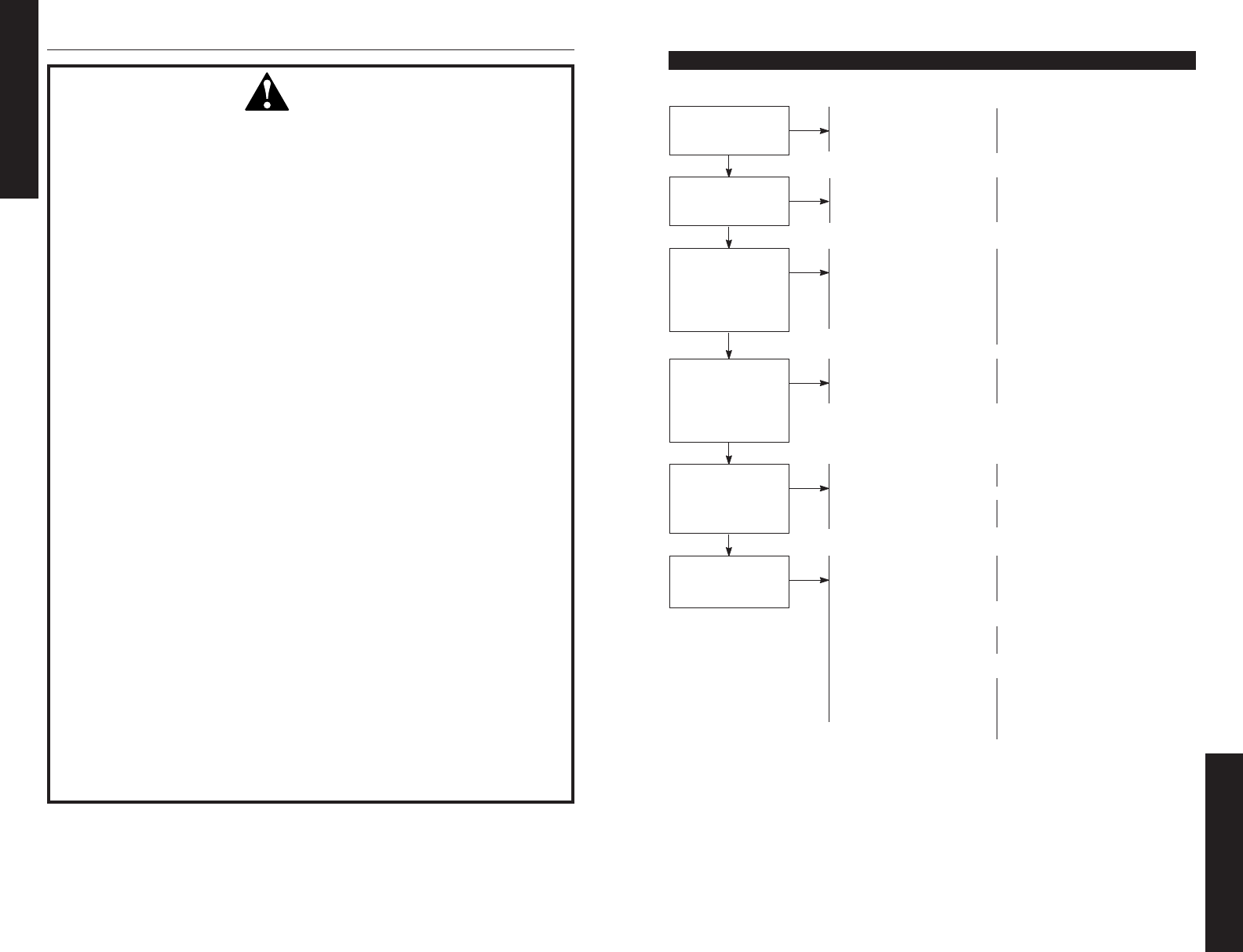
8
DESCRIPTION
WARNING!
Either of the following reactions
could cause you to lose control of
your saw while cutting, possibly
resulting in serious injury!
1. Kickback can occur whenever the
guide bar nose or tip contact an
object while the saw is running.
Tip contact may cause the guide
bar to kick upward and back
toward the operator, with a
lightning-fast reaction!
2. Pinching the saw along the top of
the guide bar may push the guide
bar rapidly back toward the
operator! Pinching can occur
whenever wood closes in around
the moving chain!
Do not rely exclusively on the safety
devices incorporated with your saw.
As a chain saw user, observing the
following steps will also help you to
avoid accident or injury on the job:
■ Sudden surprise can contribute to
accidents! With a basic under-
standing of kickback, you can
reduce or eliminate the element of
surprise.
■ Clear obstructions from the work
area before cutting. Remove any
log, branch, or other obstruction
that might contact the guide bar
tip during cutting operations.
Kickback Safety Precautions
■ Grip the saw firmly with your right
hand on the rear handle and your
left hand on the front handle,
thumbs and fingers encircling the
handles, whenever the saw is
running. Don't let go: A firm grip
will help you to reduce kickback
while maintaining control of the
saw.
■ Accelerate the saw before the
chain contacts the work area, and
always maintain high engine
speeds throughout the cut.
■ Do not overreach or attempt to cut
above shoulder height.
■ Follow the manufacturer's
instructions for sharpening and
maintenance of the saw chain.
■ Use only the replacement bar and
chain combinations specified by
the manufacturer.
■ Never stand directly over the saw
while cutting!
■ Use low-kickback chain, chain
brakes, or special guide bars to
reduce the risk of kickback. Low
kickback chain is chain that has
met the kickback performance
requirements of ANSI B175.1-
2000 (American National Standard
for Power Tools-Gasoline Powered
Chain Saws-Safety requirements)
when tested on the representative
sample of chain saws below 3.8
c.i.d. specified in ANSI B175.1-
2000.
33
TROUBLESHOOTING
Troubleshooting
ENGINE DOES NOT START
Does the engine
crank?
Faulty recoil starter.
Fluid in the crankcase.
Internal damage.
Consult with an authorized
servicing dealer.
Consult with an authorized
servicing dealer.
Consult with an authorized
servicing dealer.
NO
Good
compression?
Loose spark plug.
Excess wear on
cylinder, piston, rings.
Tighten and re-test.
NO
YES
Does the tank
contain fresh
fuel of the
proper grade?
Re-fill with fresh fuel of
the correct mixture
(gasoline and Shindaiwa
2-cycle Mixing Oil
at a 50:1 ratio).
Stale, or contaminated
fuel mixture.
NO
YES
Is fuel reaching
the cylinder and
combustion
chamber?
Check for clogged fuel
filter and/or vent.
Clean as required;
restart.
NO
Is there spark at
the spark plug
wire terminal?
Is the ignition
switch ON?.
Faulty ignition ground.
Faulty ignition unit.
Move switch to “I” (ON)
position and re-start.
NO
YES
YES
Check the
spark plug.
If the plug is wet, excess
fuel may be in the
cylinder.
The plug is fouled
or improperly gapped.
The plug is damaged
internally or of the
wrong size.
Crank the engine with the
plug removed, replace the
plug, and re-start.
Clean and re-gap the plug to
0.024 inch (0.6 mm). Re-start.
Replace the plug with a
Champion CJ6Y. Re-start.
For EMC compliance use
NGK BPMR 7A
YES
What To Check Possible Cause Remedy



